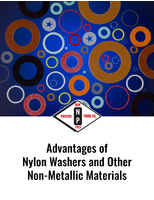ASHRAE publishes guide on building design in warm climates.
Press Release Summary:
The ASHRAE Guide for Buildings in Hot and Humid Climates identifies and explains key issues for owners, architects, HVAC designers, contractors, and building owners as they plan, build, and operate air-conditioned buildings in hot and humid climates. Topics include improving thermal comfort, managing ventilation air, reducing energy consumption, and avoiding bugs, mold, and rot. It also highlights other common problems seen in those climates and how to avoid them.
Original Press Release:
ASHRAE Publishes Book on Hot, Humid Climate Building Design Guidance
ATLANTA - Building operators and designers around the world face common issues related to thermal comfort, ventilation and energy.
But these measures take on greater concern for buildings in hot and humid climates. In addition, areas with these climates, such as South Asia, are experiencing rapid construction growth.
Design guidance on critical issues for achieving excellence and long-term sustainability in these climates is contained in a new book from ASHRAE. The ASHRAE Guide for Buildings in Hot and Humid Climates identifies and explains key issues for owners, architects, HVAC designers, contractors and building owners as they plan, build and operate air-conditioned buildings - in a sustainable way - in hot and humid climates.
"All countries want to achieve high standards of energy efficiency," author Lew Harriman said. "But recent history warns that mold and mildew problems in hot and humid climates can overshadow any gains made through energy reduction. On the other hand, the practical experience of ASHRAE's members shows that by focusing on several critical building enclosure design details and by keeping the indoor air dry, owners and designers can avoid mold problems and have high indoor air quality, while their buildings use much less energy than outdated designs."
Topics covered in the book include improving thermal comfort, managing ventilation air, reducing energy consumption and avoiding bugs, mold and rot. The book explains ASHRAE's standards in these areas. It also highlights common problems seen in hot and humid climates, along with practical alternatives for avoiding such problems.
"The guide was created in part because of requests from designers and owners in North America, but also because of requests from government agencies in developing countries that are working to establish robust building codes to guide energy use and indoor environmental quality," Harriman said. "When balancing the equally important concerns of low energy consumption, high thermal comfort and healthy indoor air, ASHRAE's experience and internally-informed consensus standards can be very helpful."
A second edition is planned for January 2009 that will add more information arranged into sections aimed at each different member of the construction and delivery team.
The cost of the ASHRAE Guide for Buildings in Hot and Humid Climates is $59 (ASHRAE members, $49). To order, contact ASHRAE Customer Service at 1-800-527-4723 (United States and Canada) or 404-636-8400 (worldwide), fax 404-321-5478, or visit at http://www.ashrae.org/bookstore.
ASHRAE, founded in 1894, is an international organization of some 50,000 persons. ASHRAE fulfills its mission of advancing heating, ventilation, air conditioning and refrigeration to serve humanity and promote a sustainable world through research, standards writing, publishing and continuing education.



